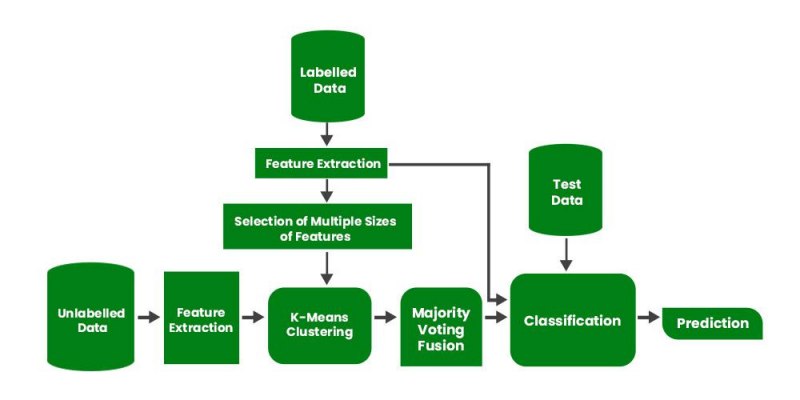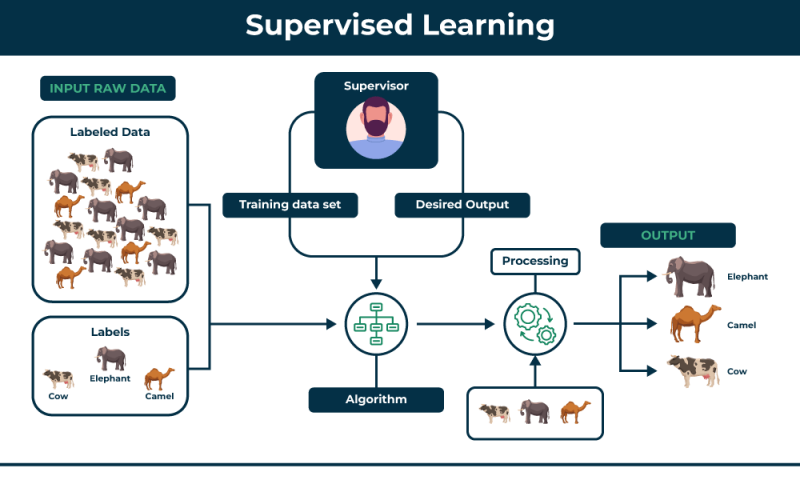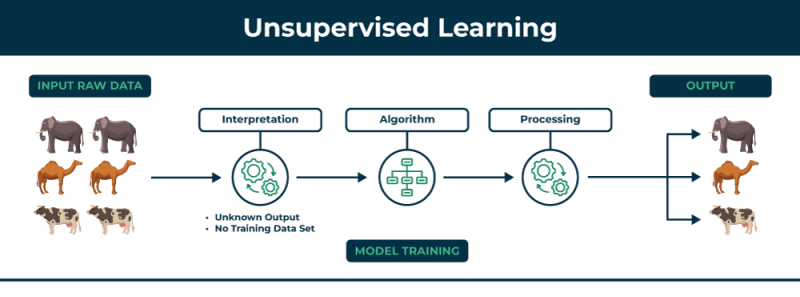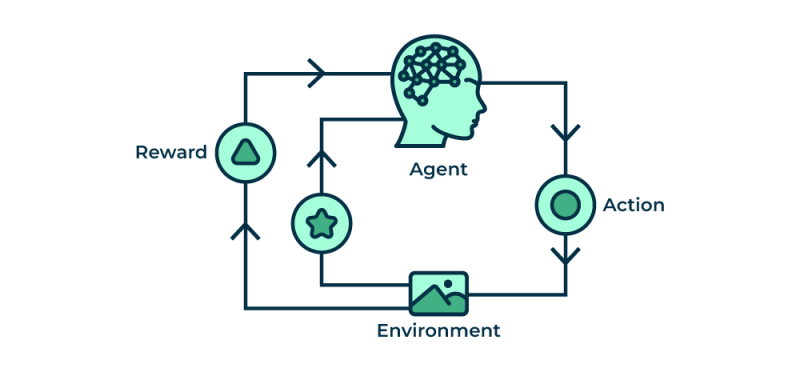Learning Types
There are several types of learning,
each with special characteristics and applications.
Some of the main types of learning algorithms are as follows:
Supervised Learning
Unsupervised Learning
Semi-Supervised Learning
Reinforcement Learning
Supervised learning is a type of learning where a model is trained on labeled data—meaning each input is paired with the correct output. The model learns by comparing its predictions with the actual answers provided in the training data.
Over time, it adjusts itself to minimize errors and improve accuracy. The goal of supervised learning is to make accurate predictions when given new, unseen data. For example, if a model is trained to recognize handwritten digits, it will use what it learned to correctly identify new numbers it hasn’t seen before.
Workflow for Supervised Learning. ( Flowchart / Color )
Directions from MathWorks
How can we do "Training and Testing"?
Unsupervised learning is a type of learning technique in which
an algorithm discovers patterns and relationships using
unlabeled data.
Unlike supervised learning, unsupervised learning doesn’t
involve providing the algorithm with
labeled target outputs.
The primary goal of unsupervised learning is often to discover hidden patterns, similarities, or clusters within the data, which can then be used for various purposes, such as data exploration, visualization, dimensionality reduction, and more.
Semi-Supervised learningis a machine learning algorithm that works between the supervised and unsupervised learning so it uses both labelled and unlabelled data.
It’s particularly useful when obtaining labeled data is costly, time-consuming, or resource-intensive. This approach is useful when the dataset is expensive and time-consuming. Semi-supervised learning is chosen when labeled data requires skills and relevant resources in order to train or learn from it.
These techniques are used when dealing with data that is a little bit labeled and the rest large portion of it is unlabeled. The unsupervised techniques can be used to predict labels and then feed these labels to supervised techniques.

Reinforcement Learning algorithm is a learning method that interacts with the environment by producing actions and discovering errors.
Trial, error, and delay are the most relevant characteristics of reinforcement learning. In this technique, the model keeps on increasing its performance using Reward Feedback to learn the behavior or pattern.
These algorithms are specific to a particular problem where a bot competes with humans and even itself to get better and better performers in the game. Each time data is feeded, the algorithm learn and add the data to the knowledge which is training data. So, the more it learns the better it gets trained and hence experienced.


